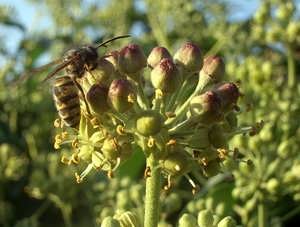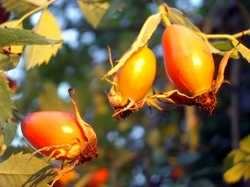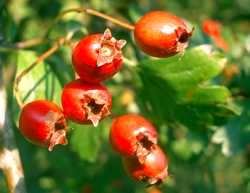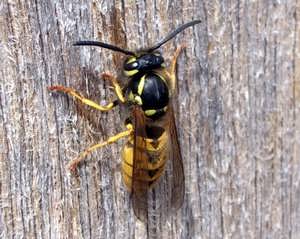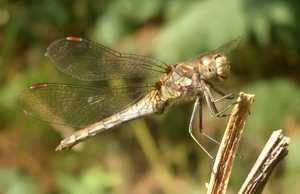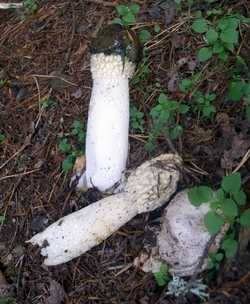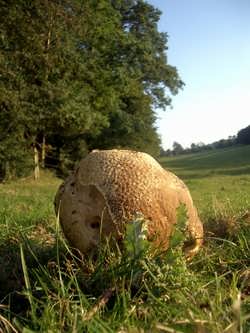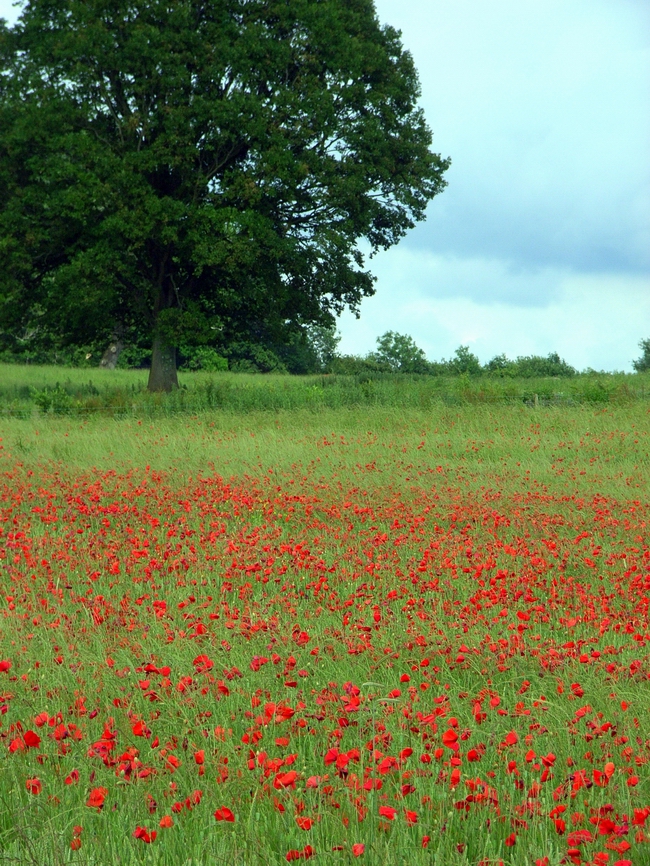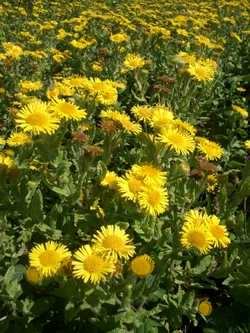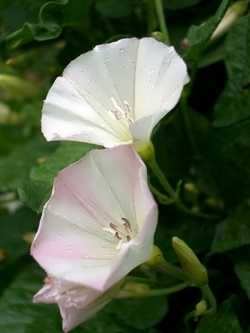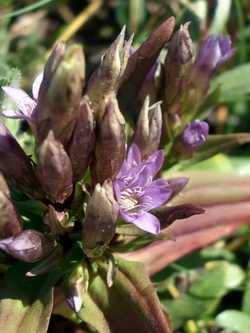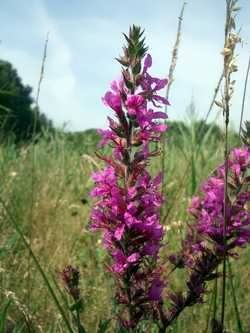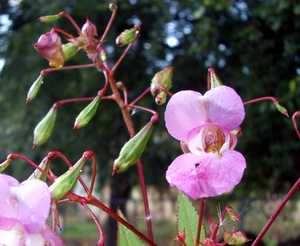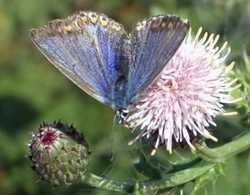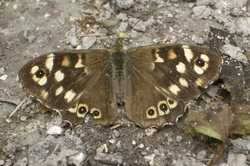When to Watch Wildlife |
J | F | M | A | M | J | J | A | S | O | N | D | Search |
Current wildlife highlights |
||
|
What's new on this site |
||
|
Wildlife calendar |
||
|
Plants and Animals |
||
|
Habitats |
||
|
Wildlife sites |
||
|
WWW links |
||
|
Guide Books |
||
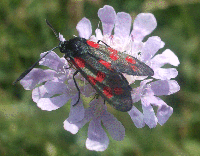 |
||
|
© PMcS 2006 |
|
September |
||||||||||||||||||||||||||||||||
|
||||||||||||||||||||||||||||||||
|
This month look for:
|
||||||||||||||||||||||||||||||||
| In September the
tide turns from Summer to Autumn, though the weather can still be
delightful. Morning mists hang low in steep sided valleys and
cloak the meadows; gossamer webs are laden with ephemeral pearls.
Autumn will bring great changes. Many plants die back to their storage roots below ground, overwinter as seeds or remain as a shadow of their former self above ground; deciduous trees and shrubs loose their leaves to protect them from the winter when the ground may be frozen and water scarce; animals fatten up for their winter hibernation, insect numbers decline massively as adults of many species die to leave the caterpillars or pupae to survive the winter; summer breeding birds move to their wintering grounds in Africa where they can be sure of food, whereas birds from the north descend in their thousands to the countryside, estuaries and even gardens of Britain. This is the month when these changes start, but it is not until November when Autumn comes to a conclusion. By September the horse-chestnut trees (conker tress) have been
showing signs of the changing season for several weeks, already with
their large palmate leaves browning at the edges like they have passed
too near to a naked flame. The horse-chestnut also yields
up its seeds this month in the form of conkers which drop to the ground
in their spiky green cases. The conker seed possesses a skin that,
when fresh, looks like the finest wood veneer, with a rich brown and
shiny grain. Other tree species such as ash, beech
and sweet chestnut are also turning with tinges of yellow, orange
and light green tinges.
The hedgerows are full of ripening berries with hawthorn haws and rose hips shining red, while sloes, blackberries and elderberries are midnight black. Some trees yield their seeds up with wings such as field maple, ash and sycamore. The wings help the seeds to float away from the parent tree where it has more chance of germinating with less competition. Acorns have no such help and fall directly below the parent. However the acorns have an exclusive set of allies. Jays and grey squirrels pick these up and stash them in the ground to get them through the harsh winter to come. Not all are found again however, and with a lot of luck these may germinate to grow into new oak trees, which bear their own fruit.
Certain insects are noticeable at this time of year. Around the time of the harvest in August onwards the craneflies (or daddy-long-legs) appear in their greatest numbers and seemingly fly in a hap hazard rather inebriated way. The craneflies' legs break off easily as a way of escaping predators (including small boys). The larval stage of this family of insects (there are many species) is known as a leatherjackets. It is a destructive maggot like larva which feeds on cereal and other roots, but which is an important food source for many birds. On sunny days on riverbanks and in areas of wetland, a real highlight of early September are the large dragonflies. They hunt for insects moving with great agility and speed, darting one way and then the other, sometimes defending territories. They are hardly ever still, but do sometimes alight on a prominent leaf or stem, only to dash out once more. The stunning darter dragonfly, the red common sympetrum can be quite tolerant of close inspection and this group is less restless than the hawkers, but approach quietly. The enormous hawker type dragonflies, such as the common aeshna, are always on the move and are more wary.
Ivy is one of the few late flowering plants and the nectar forms an important food sources for bees and wasps. There are seven different wasp species in Britain. Common and German wasps seemingly suddenly appear in September but this is because their pattern of obtaining food has changed. Their summer past time of killing insects to feed to the larvae in the nest has come to an end (the larvae provide a sweet saliva in return). This is because their queen has now stopped laying eggs and the food incentive has gone. As a result they then move onto other sweet substitutes, such as the sugars of fallen fruit or the jam in your picnic sandwiches. Unfortunately it is now that wasps, with their ability to sting and not die, become particularly unpopular in the garden. Of the many fungi of note, one that you may smell before you see, is the rather shocking stinkhorn. Follow your nose to seek out this species in the woodlands where it thrives. The rancid smell attracts flies which feed on the sticky tip and carry off the fungus's spores to a new location. A rather more attractive species is the edible giant puff ball which can be found, if you are lucky. littering permanent pastures, by the dozen. This species grows to an enormous size and eventually dies to yield its many spores when it is ruptured, maybe by a passing cow!
The birds have now stopped moulting and are in their winter plumage. Family groups are often still together with some young pestering the adults for handouts. Many small birds however such as tits, chiffchaffs and others move through countryside together in flocks helping each other find food. Whilst this month there is no difficulty in uncovering insects, later in the year food will become harder to find. By moving together prey is disturbed out of its hiding place and anything missed by one bird will be found by others. On warm days it may be possible to hear warblers (e.g. willow warblers) sing once again.
|
||||||||||||||||||||||||||||||||
| Habitats and species |
||||||||||||||||||||||||||||||||
|
Parks and gardens:
They birds are starting to make their presence known once more now that
the moult is over. Some, such as the great and bluetits
will regularly call to one another. The smaller birds are often in
family parties and the youngsters may be told apart from the adults by
their less developed colouration, such as the greenfinches.
Start feeding the birds any time now, although food is plentiful this
month. |
||||||||||||||||||||||||||||||||
|
Woodlands
(including wood pasture): |
||||||||||||||||||||||||||||||||
Arable and
hedgerows: Where there is still wheat that remains unharvested the
occasional arable weed such as poppy or scentless mayweed
may still manage to flower.
|
||||||||||||||||||||||||||||||||
Road verges: Most of the summer flowers are now over or
fading, but some make this time of year their own and are appreciated
for it that much more. The yellow common toadflax and
fleabane flowers grow in scattered clumps in road verges. The
lesser bindweed is still making headway climbing up any available
shrub or through the stems of the grasses. In general though the
verges are looking ragged with dead grass seed heads, etiolated
nettles and the skeletons of cow parsleys and hogweed.
|
||||||||||||||||||||||||||||||||
Chalk and limestone grasslands: These grasslands have now peaked. Some late species such as Autumn gentian and the beautiful acid yellow autumn hawkbits are flowering however.
If you are lucky you may also still find a specialist of chalk grassland - the Autumn lady's-tresses in flower.
|
||||||||||||||||||||||||||||||||
|
Meadows (neutral) and flood plain grasslands: Meadows are
likely to have now been grazed for several weeks. Grasses have an
Autumn surge of growth and the white flowers of yarrow, with its
feathery highly dissected leaves, may escape the cattle. |
||||||||||||||||||||||||||||||||
|
Acidic grasslands: |
||||||||||||||||||||||||||||||||
|
Heathlands: Colour is
fading from the flowering heath plants. Where there is water
hawker dragonflies are still dashing around with the occasional noisy
clash of wings. |
||||||||||||||||||||||||||||||||
|
Mountain
and Moorlands (uplands): |
||||||||||||||||||||||||||||||||
|
Rivers and ponds
(including bogs and mires):Himalayan balsam, which has become
a scourge of the river bank, is at its peak. This invasive
introduction has spread widely along river corridors and smothers
everything in its path. It is a tall pink flowered plant which may
well be smelt before it is seen, as its pungent sweet sickly smell is
powerful. It spreads its seeds by way of explosive seed pods which
project their contents for several feet, sometimes into the river
itself. It seems to like having its roots fairly wet. A number of other waterside plants are also still in flower. Purple loosestrife (see photograph above) has striking spikes of pink flowers that penetrate the otherwise monotonous green river fringe. The white flowers of greater bindweed and the umbellifer wild angelica attract honey bees and hoverflies. The yellow flowers of bird's-foot trefoil and yellow loosestrife can also be found growing in dense stands of vegetation in damp marshy ground.
|
||||||||||||||||||||||||||||||||
Sea and the sea shore (including estuaries): On the estuaries the waders and wild fowl are returning from their summer breeding grounds. They now sport their winter plumage which is generally grey where it was previously coloured brown etc. One of the largest waders is the curlew, with its distinctive call, along with the piping black and white oystercatchers with their long straight orange bills. |
||||||||||||||||||||||||||||||||
|
Mammals: Even though hedgehogs are starting to build up body
reserves for their winter hibernation, late litters of young are common
in September, especially if previous litter has not survived.
Unfortunately these youngsters are less likely to survive the winter
than those born in early summer. Earthworms beetles, slugs
and snails are pursued by hedgehogs now with added vigour.
Do not be tempted to give hedgehogs milk and bread as this is
unsuitable, but rather if you can afford it put out meaty pet food. |
||||||||||||||||||||||||||||||||
| Birds:
With the massive movement of birds this is the time to visit the famous
haunts of the twitchers and more casual bird watchers. As well as
birds flying south from colder climes (such as Greenland and
Scandinavia) and those departing to the warmer southern hemisphere, a
number of birds that do not regularly breed in Britain, can be seen as
they pass through (passage migrants) and some turn up unexpectedly as
they are blown off their normal routes, even form as far away as the
USA. It is hard to always know when you see birds in numbers at
this time of the year whether they are passage migrants rather than
residents of the same species. The best birding sites to see the
migration are coastal areas where large blocks of land for promontories
such as North Norfolk (The Wash and the bird reserves to the east),
Spurn Head and Flamborough (Humberside). When it is stormy with on
shore winds the birds tend to hang around rather than cross the sea.
These conditions may provide the best time to watch birds. Keep an
eye on the birding web sites or even (depending on your twitchiness and
the depth of your wallet) get birding alerts on your mobile. |
||||||||||||||||||||||||||||||||
|
Amphibians & Reptiles: This month and last is when the smooth
snake young are 'born'. They are instantly self sufficient.
Smooth snakes are very rare and are confined to lowland heaths in
southern England. |
||||||||||||||||||||||||||||||||
Insects: Many butterflies are still on the wing from the second or
third hatchings. However they may well be ragged and this is their
last month as adults. The browns and skipper species that feed on
grass whilst caterpillars can be found in hedgerows, field edges and
grasslands. The male gatekeeper (a member of the brown
family) sets up territories along hedges where the nectar bearing
plants of marjoram, mint, wood sage and bramble attract the adults.
The attractive wall butterfly can be found basking in the sun on
rocks and stones. It will actually fly ahead along a path and
settle only to fly again in a way that makes it feel like you are
chasing it.
|
||||||||||||||||||||||||||||||||
|
Plants:
Many plants have or are setting seeds. Creeping thistles
and rosebay willow-herb plants are sending out fluffy seed
umbrella like structures to carry the seed by the wind to a new
location. |
||||||||||||||||||||||||||||||||
| Fungi
- fungi can be found throughout the year but damp a September and
October will give rise to a multitude of fruiting bodies yielding
billions of spores to spread the species far and wide. |
||||||||||||||||||||||||||||||||
|
|
All images and text are copyright PMcS 2006
